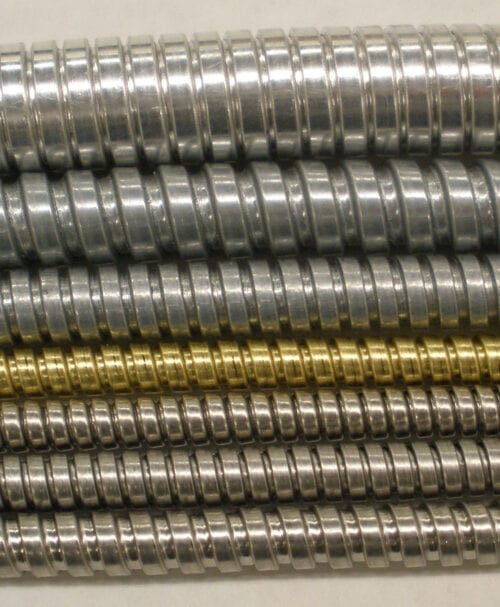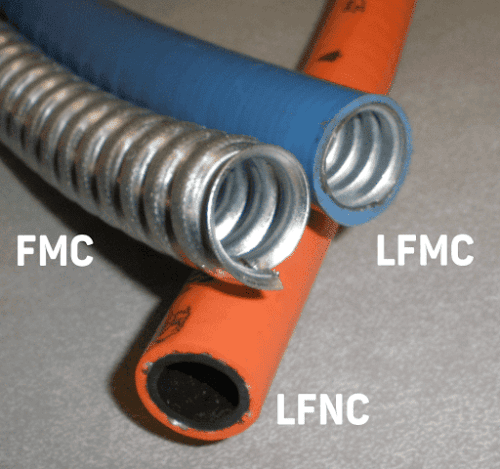What makes metal hose flexible?
Leave a CommentHose structure and material features affect hose flexibility:
- The space between metal convolutions
- The profile (square lock or full interlock) of roll-formed metal strip in the hose
- The size and quality of metal in the hose
- Packing in metal convolutions (wire or fiber)
- The elasticity or rigidity of conduit jacket material (this does not apply to FMC bare conduit)
- The structure of thermoplastic extruded in or around conduit (injected between or laid over the convolutions)

Because flexibility is an important factor in the life and use of conduit, bend radius is published for each type of conduit.
UL and CSA test conduit flexibility at various temperatures to make sure of no cracking or degradation of the conduit jacket occurs at the rated temperatures.
If you need to protect wiring from crushing force, frequent bending or vibration, ANAMET Industrial Solutions flexible metal hose and conduit offer effective options.
- UL listed Types RWA and RWS are bare conduit types that have served the construction industry for decades. They are also called Flex or Greenfield.
- UL recognized Type DE-710 has served industry for decades, delivering reliable protection for installed wiring.
- UI Cap and SL Cap are flexible metal hose options with different profiles available in yellow brass, stainless steel, aluminum, galvanized steel or other metal.
- Type DSL metal hose is a square lock conduit that is similar to Type DE-710, but in a lighter weight configuration.
- Types EF, EFST, EFL and HFL have similar flexibility, protecting wiring in factory and industrial locations. Both EFL and HFL (Halogen Free) conduit have an aluminum core, for applications needing a lighter weight conduit.
- Type MTC (machine tooling conduit) was developed for robot and factory automation, connecting wiring and linkages that must be frequently bent.
- UL listed Type CNP (conduit non-metallic PVC Type A) was developed to protect control wiring for production machinery in automotive factories.
- UL listed Type NMUA PVC conduit supports HVAC outdoor installations.
The National Electrical Code (NEC) defines three different kinds of flexible electrical conduit. Underwriter’s Laboratories (UL) tests these conduit types to these operating Standards. The Canadian Standards Association (CSA) has similar requirements in their Standards.
- UL 1 is for flexible metal conduit (FMC, Flex or Greenfield). It is approved for dry locations.
- UL 360 is for liquid tight, flexible metal conduit (LFMC such as ANACONDA SEALTITE®). It is approved for burial and wet conditions.
- Galvanized steel conduit with an integral bonding wire is conductive for grounding equipment within six feet.
- Stainless steel conduit requires a separate grounding conductor or bonding jumper.
- UL 1660 is for liquid tight, flexible non-metallic conduit (LFNC). It is non-conductive, but is approved for burial and wet conditions.
These are a few options in flexible hose and conduit. Ongoing research and development deliver more options every year.
For more information, contact us.




